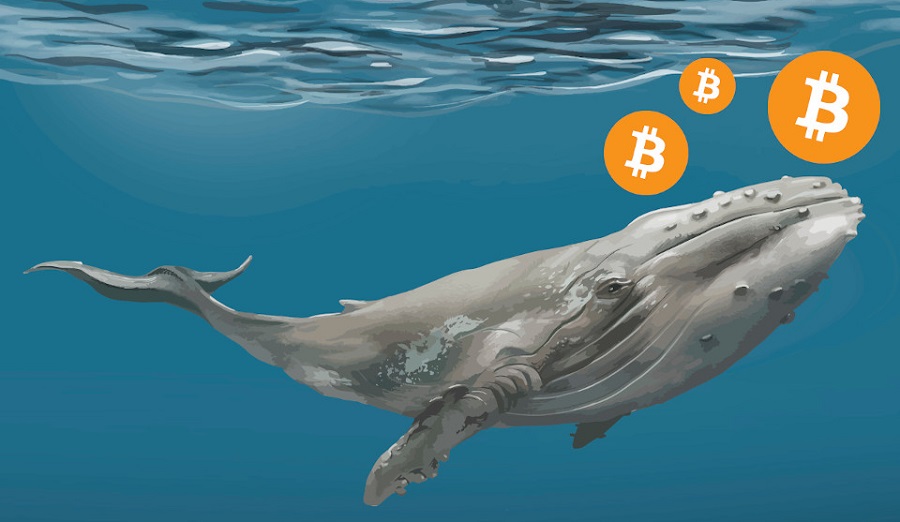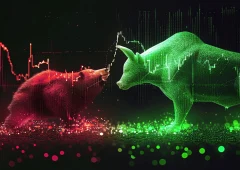Bitcoin Whale Activity Soars to Peak Levels
08.08.2024 20:00 1 min. read Alexander Stefanov
Bitcoin whale transactions surged to their highest levels since April amid a sharp market drop on August 5 and 6, with large holders capitalizing on the price decline.
On August 8, Santiment reported a significant increase in Bitcoin transactions involving large sums during the recent dip.
🐳 August 5th and 6th saw the highest level of Bitcoin whale transactions since the first week of April. According to the total holdings of wallets with 10 to 1,000 BTC, they rapidly accumulated on the price dip that saw crypto’s top asset fall below $50K. pic.twitter.com/wLG33tIV2k
— Santiment (@santimentfeed) August 7, 2024
Specifically, wallets with 10 to 1,000 BTC saw a notable rise in activity as Bitcoin plummeted below $50,000. The data shows that 28,319 transactions exceeded $100,000 each, and 5,738 were over $1 million.
Bitcoin’s price dropped dramatically by 18% on August 5 but has since partially recovered to about $57,000. In the past month, Bitcoin whales have accumulated nearly $23 billion worth of the asset, with a peak in buying during the recent crash.
Over 400,000 BTC were transferred to long-term holding addresses since early July, with minimal selling from older whales noted.
In contrast, Bitcoin ETFs in the U.S. experienced significant outflows of $554 million between August 2 and 6, indicating a cautious market sentiment. This trend raises concerns about the market’s stability, as highlighted by market researchers.
-
1
Bitcoin: What to Expect After Hitting a New All-time High
10.07.2025 14:00 2 min. read -
2
Peter Brandt Issues Cautious Bitcoin Warning Despite Bullish Positioning
10.07.2025 20:00 2 min. read -
3
Standard Chartered Becomes First Global Bank to Launch Bitcoin and Ethereum Spot Trading
15.07.2025 11:00 1 min. read -
4
Vanguard Now Owns 8% of Michael Saylor’s Strategy, Despite Calling BTC ‘Worthless’
15.07.2025 17:09 2 min. read -
5
Bitcoin Reaches New All-Time High Above $116,000
11.07.2025 7:56 1 min. read
Ethereum Flashes Golden Cross Against Bitcoin: Will History Repeat?
Ethereum (ETH) has just triggered a golden cross against Bitcoin (BTC)—a technical pattern that has historically preceded massive altcoin rallies.
Bitcoin Banana Chart Gains Traction as Peter Brandt Revisits Parabolic Trend
Veteran trader Peter Brandt has reignited discussion around Bitcoin’s long-term parabolic trajectory by sharing an updated version of what he now calls the “Bitcoin Banana.”
Global Money Flow Rising: Bitcoin Price Mirrors Every Move
Bitcoin is once again mirroring global liquidity trends—and that could have major implications in the days ahead.
What is The Market Mood Right Now? A Look at Crypto Sentiment And Signals
The crypto market is showing signs of cautious optimism. While prices remain elevated, sentiment indicators and trading activity suggest investors are stepping back to reassess risks rather than diving in further.
-
1
Bitcoin: What to Expect After Hitting a New All-time High
10.07.2025 14:00 2 min. read -
2
Peter Brandt Issues Cautious Bitcoin Warning Despite Bullish Positioning
10.07.2025 20:00 2 min. read -
3
Standard Chartered Becomes First Global Bank to Launch Bitcoin and Ethereum Spot Trading
15.07.2025 11:00 1 min. read -
4
Vanguard Now Owns 8% of Michael Saylor’s Strategy, Despite Calling BTC ‘Worthless’
15.07.2025 17:09 2 min. read -
5
Bitcoin Reaches New All-Time High Above $116,000
11.07.2025 7:56 1 min. read


